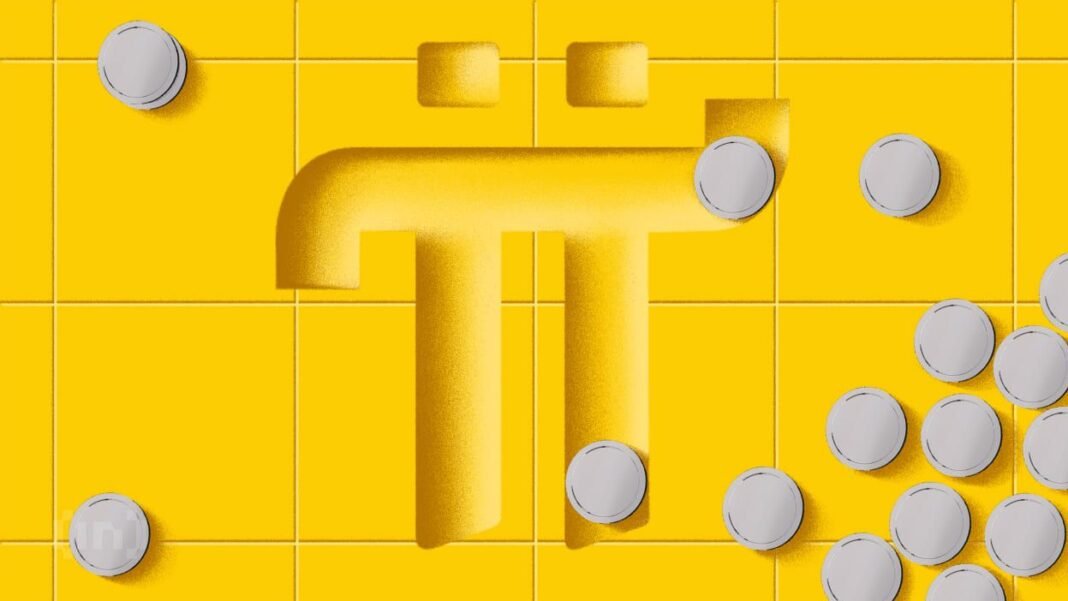Decoding the Pi Coin Rally
Underlying Momentum
The recent surge in Pi Coin’s value isn’t solely attributable to speculative fervour. Multiple indicators suggest a more fundamental shift in market sentiment, driven by a confluence of factors. Smart money, as tracked by the Smart Money Index (SMI), has been steadily flowing back into Pi Coin since late October. The SMI recently crossed above its signal line, a bullish signal indicating renewed interest from institutional and historically profitable wallets. The last time we saw flows like this was when Bitcoin ETF speculation was rife.
Whale activity reinforces this trend. The Chaikin Money Flow (CMF), which measures large money inflows, has flipped positive for the first time since mid-September, suggesting whales are actively accumulating Pi Coin. In 2023, a similar event preceeded a short-lived rally before prices cooled, so this could be a good sign. Furthermore, retail investors appear to be following suit. The Money Flow Index (MFI) has been making higher highs since mid-October, indicating consistent buying pressure. The convergence of smart money, whale accumulation, and retail participation often signals a coordinated phase of confidence building before a significant price movement.
Technical Analysis: A Critical Juncture
Despite the positive momentum, Pi Coin faces a critical test on the charts. On the daily timeframe, the price remains confined within a falling wedge pattern, typically indicative of a potential bullish reversal. The price briefly touched the wedge’s upper boundary at $0.29 but met resistance from sellers. However, buyers have maintained their position, keeping the bullish structure intact. The key to unlocking further gains lies in decisively breaking and closing above $0.29.
A successful breakout above this level would pave the way for subsequent targets at $0.32 and $0.37. The immediate hurdle, however, remains $0.28, a level that has previously acted as significant resistance. Overcoming this zone could dramatically shift market sentiment in favour of the bulls, potentially attracting further investment and propelling the price higher. Let’s see if spot Bitcoin ETF inflows will affect altcoins like PI too.
Read Also: BlockDAG Secures CertiK and Halborn Audits: A New Bar for Crypto Project Legitimacy in Q4 2025
Risks and Bearish Divergences
Despite the optimistic outlook, potential risks remain. A hidden bearish divergence has formed between August and October, with Pi Coin’s price making lower highs while the Relative Strength Index (RSI) registers higher highs. This divergence suggests that the existing downtrend may still possess underlying strength, potentially leading to a reversal of the recent gains. For context, Pi Coin is still down nearly 37% over the past three months, maintaining the broader bearish trend.
Looking ahead, if the price fails to sustain its momentum and falls below $0.20, the bullish setup would be invalidated. This could trigger a significant sell-off, potentially driving the price down towards $0.18 or even $0.15. Traders should exercise caution and closely monitor key support and resistance levels to manage their risk effectively.
Pi Network in 2025
Ecosystem Development
Looking ahead to 2025, the future of Pi Coin hinges on the continued development and expansion of the Pi Network ecosystem. The launch of the open mainnet, which is slated to happen sometime this year, remains a critical milestone, enabling greater functionality and integration with other blockchain networks. The success of the Pi Network depends on its ability to foster a thriving community and attract developers to build innovative applications on its platform. We are seeing a rise of L1/L2 ecosystems that focus on mass adoption in novel ways, for example Fuel Labs, who are focused on modularity to achieve main stream adoption, so PI Network must follow similar moves.
Regulatory Landscape
The evolving regulatory landscape will also play a significant role in shaping Pi Coin’s future. Increased regulatory scrutiny of the crypto industry could impact the accessibility and adoption of Pi Coin in certain jurisdictions. Clarity and compliance with evolving regulations will be essential to the project’s long-term sustainability. For example, in the UK, regulatory guidelines continue to tighten. In 2025, the UK Financial Conduct Authority is expected to finalise regulations on unregistered crypto assets, and Pi Network will need to consider these regulations.
Competition and Innovation
The competitive landscape within the cryptocurrency market remains intense, with numerous projects vying for attention and investment. Pi Network must continue to innovate and differentiate itself from the competition by offering unique features and functionalities. Exploring partnerships with established players in the crypto space could also provide a competitive advantage and accelerate its growth. As the space matures, interoperability is the main goal, which can only be achieved by leveraging zero knowledge proofs and other forms of novel cryptography.
Final thoughts
While the recent surge in Pi Coin’s price offers a glimmer of hope for the project, caution is warranted. The underlying momentum appears positive, but technical indicators suggest potential risks. The success of Pi Coin in 2025 will depend on its ability to expand its ecosystem, navigate regulatory challenges, and compete effectively within the dynamic cryptocurrency market. Only time will tell if Pi Network can deliver on its promises and establish itself as a prominent player in the digital asset space.






